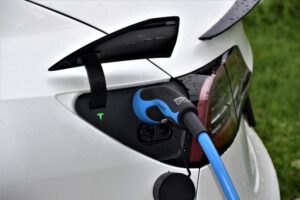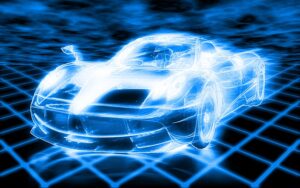Wan Gang, “China’s father of electric cars”, asserts that the market for new-energy vehicles is huge. And despite an ongoing, and at times, contentious debate about which of two competing technologies – hydrogen or electric – should replace fossil fuels for personal and commercial transportation, Gang believes there is ample room for both.
And Wan Gang’s opinion isn’t one that should be taken lightly. For it was his vision to make China an electric-vehicle powerhouse two decades earlier, that revolutionized the global auto industry. His strategy of using government subsidies to boost the then-unproven technology of electric vehicles, has made China home to one in every two EVs sold worldwide today.
Wan Gang (万钢) – former Audi executive, past president of Tongji University (2002–2007), China’s Minister of Science and Technology, and Vice Chairman of China’s national advisory body for policy making.
Now, Wan Gang believes China (and the world), is ready for the next game-changing development for new-energy vehicles. Wan believes that it’s hydrogen’s turn to take it’s rightful place in the automotive industry. “We should look into establishing a hydrogen society”, said Wan in a Bloomberg interview. “We need to move further toward fuel cells.”
This means the Chinese government is serious about making hydrogen-powered vehicles a national priority. Even while China plans to phase out the long-time subsidy program for the maturing electric vehicle industry, the government remains committed to funding and developing hydrogen fuel cell technology. The world’s biggest car market wants to embrace hydrogen fuel cell vehicles the way it did EVs.
Hydrogen Vehicles Still Have A Future In Transportation
While many pundits have already written off hydrogen technology as a viable competitor in the new-energy vehicle market (Elon Musk once dismissed fuel cells as “fool cells”), Wan Gang is much more optimistic. For Wan, who trained as a mechanical engineer in Germany, the shift toward hydrogen is a natural step in realizing a vision of modern transportation. Wan believes that both EVs and hydrogen vehicles can co-exist – just in different sectors of the market.
 For long-distance travel, Wan believes that hydrogen fuel vehicles are a logical alternative to range-limited electric vehicles. “The adoption of fuel-cell vehicles has been slow in spite of China having an abundant supply of hydrogen. There are only about 1,500 such vehicles in use there today, compared with more than 2 million purely electric vehicles,” Wan said. But with support for hydrogen refueling infrastructure, fuel cell vehicles are expected to become a significant part of the alternative-fuel fleet in coming years. “China is promoting the adoption of hydrogen vehicles in selected trial regions as it sets up an ecosystem that includes hydrogen production, storage, transportation and refueling.”
For long-distance travel, Wan believes that hydrogen fuel vehicles are a logical alternative to range-limited electric vehicles. “The adoption of fuel-cell vehicles has been slow in spite of China having an abundant supply of hydrogen. There are only about 1,500 such vehicles in use there today, compared with more than 2 million purely electric vehicles,” Wan said. But with support for hydrogen refueling infrastructure, fuel cell vehicles are expected to become a significant part of the alternative-fuel fleet in coming years. “China is promoting the adoption of hydrogen vehicles in selected trial regions as it sets up an ecosystem that includes hydrogen production, storage, transportation and refueling.”
There’s no arguing that electric vehicles will continue to dominate inner-city traffic. Few believe that hydrogen cars can compete with battery-electric cars in urban markets where drivers have short commutes. Same goes for urban buses. Currently, China is by far the world leader in use of electric buses. But electric buses aren’t as conducive to long distances, so they are mostly limited to inner-city use. Wan believes this is just one segment of the transportation industry where fuel cell technology is ripe for adoption. “Hydrogen buses are capable of driving beyond 500 kilometers on a full tank, versus about 200 kilometers for electric ones. That presents a big opportunity because there are five long-distance buses in China for every inner-city one,” according to Wan.
And similar to long-distance buses, commercial trucks, vans, cars and SUVs intended for inter-city travel, are all potential candidates for a transition to hydrogen in coming years. A significant number of long-range fleets that currently run on gasoline and diesel will likely transition to hydrogen vehicles versus electric vehicles. Simply put, EVs have size, weight, fueling time, and range constraints. Large battery packs take up valuable space, are heavy, take a long time to charge, and have limited range. So even if demand for fuel cell cars doesn’t materialize, companies with long-haul trucks, buses, and delivery vans will certainly appreciate the various advantages of hydrogen over batteries.
How Do Hydrogen Fuel Cell Vehicles Work?
A fuel cell vehicle has a high-pressure tank that feeds a fuel cell with hydrogen gas. The hydrogen gas mixes with oxygen and starts an electrochemical reaction that produces electricity to power an electric motor. This means that FCVs (Fuel Cell Vehicles), or FCEVs (Full Cell Electric Vehicles), have characteristics of both electric cars (due to the use of electric energy) and conventional gasoline cars (because of the tank). Hydrogen fuel cell vehicles release no toxic emissions. The only by-product of the whole process is water (connection of hydrogen and oxygen atoms) and heat.
Arguments For Electric Vehicles
 In cities, people prefer to drive electric cars.
In cities, people prefer to drive electric cars.- Electric vehicles are currently cheaper to purchase than hydrogen fuel cell vehicles.
- The infrastructure (number of power stations) for electric vehicles is significantly more developed than the infrastructure (number of hydrogen filling stations) for fuel cell vehicles.
- Because of the “energy vector transition” (energy moving from wire to gas to wire for a hydrogen vehicle), electric vehicles are considered to be much more efficient – roughly twice as efficient as hydrogen vehicles.
- For a hydrogen vehicle, the process of converting 100 watts of electricity (produced via solar energy) into hydrogen (using electrolysis) is only 75% efficient (you lose roughly 25% of the electricity). Then, the process of compressing, chilling and transporting the hydrogen to the filling station is only 90% efficient (you are down to 67.5% of original energy). Then, once the hydrogen is inside the vehicle, it needs to be converted once again into electricity. This process is only 60% efficient (so you are now down to 40.5% of original electricity). Finally, electricity used in the motor to move the vehicle around is roughly 95% efficient (leaving you with just 38.5% of original electricity).
- For an electric vehicle, the same 100 watts of electricity (also produced via solar), runs on wires directly from the energy source to the car. This process through the grid is 95% efficient. Then, you lose a further 10% of energy from charging and discharging the lithium-ion battery (you are down to 85.5% of original electricity). Finally, same as for hydrogen vehicles, electricity used in the motor to move the vehicle around is roughly 95% efficient (leaving you with roughly 81.2% of original electricity).
- Hydrogen can be a dangerously explosive gas. And while fuel tanks in hydrogen vehicles are now Kevlar-lined to protect against this explosive possibility, this is hardly confidence-inspiring.
Arguments For Hydrogen Fuel Cell Vehicles
 More suitable for inter-city driving since people prefer the extended range of fuel cell vehicles for longer distances.
More suitable for inter-city driving since people prefer the extended range of fuel cell vehicles for longer distances.- Hydrogen fuel cells have better performance and longevity than electric vehicles in cold weather climates.
- Hydrogen fuel cells are considerably lighter and smaller than the battery packs in electric vehicles.
- Quick refueling. Drivers can refuel hydrogen vehicles much more quickly than electric vehicles. Fueling a hydrogen car, just like fueling a regular gasoline car, takes only 3 to 5 minutes.
- Hydrogen (extracted by electrolysis of water), can be produced using renewable energy sources (solar, wind, etc.). Plus, there are much more efficient methods of producing hydrogen (such as the proton-exchange membrane) being developed.
- According to the Canadian Hydrogen and Fuel Cell Association, the carbon footprint of hydrogen fuel cell vehicles is an order of magnitude better than electric vehicles (2.7 grams of carbon dioxide per kilometer compared to 20.9 grams).
- Fuel cells offer a more environmentally friendly alternative to lithium batteries in electric vehicles. Lithium-ion batteries pose an environmental threat since their life-cycle is relatively short, and they are hard to recycle. So not only do they leave leave a significant carbon footprint when manufactured, but they can release toxic chemicals into the environment end-of-life.
Hydrogen Vehicle and Electric Vehicle Stocks
So how do you profit from the world’s transition to new-energy vehicles?
First, one needs to understand that many of the up-and-coming companies selling new-energy vehicles (or simply the “idea” of new-energy vehicles), have little to no earnings. Even the darling of electric vehicles – Tesla – has had to rely on the sale of regulatory carbon-emission credits to its rivals, just to eke out a profit (CNBC, July 23, 2020). And since an investment is something which pays you to own it – meaning there has to be real earnings – these companies should be called for what they are – speculative bets.
One way to mitigate the risk of speculating in the new-energy vehicle market, is to look at established auto companies that already have positive earnings, expertise in manufacturing, and have existing models of EVs (electric vehicles) and FCVs (fuel cell vehicles). Three respected companies that meet these criteria are as follows…





